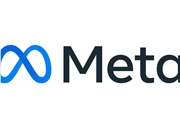In January of this year, the release of DeepSeek's R1 model was not just an ordinary AI announcement; it was hailed as a "watershed moment" in the tech industry, causing a significant stir across the entire technology sector and forcing industry leaders to rethink their fundamental approaches to AI development. DeepSeek's extraordinary achievements did not stem from novel features but from its ability to deliver results comparable to those of tech giants at a fraction of the cost, marking the rapid progress of AI along two parallel tracks: "efficiency" and "computing."
Innovation Under Constraints: High Performance at Low Cost
DeepSeek's emergence has been remarkable, showcasing the capability for innovation even under significant constraints. In response to U.S. export restrictions on advanced AI chips, DeepSeek was compelled to explore alternative paths for AI development. While American companies pursued performance gains through more powerful hardware, larger models, and higher-quality data, DeepSeek focused on optimizing existing resources, turning known ideas into reality with exceptional execution—a form of innovation in itself.

This efficiency-first approach yielded impressive results. Reports indicate that DeepSeek’s R1 model performs comparably to OpenAI but operates at only 5% to 10% of the latter's operational costs. More shockingly, the final training run cost of DeepSeek's predecessor V3 was a mere $6 million, compared to the tens or even hundreds of millions of dollars spent by U.S. competitors. This budget was dubbed a "joke" by Andrej Karpathy, a former Tesla AI scientist. OpenAI reportedly spent $500 million to train its latest "Orion" model, while DeepSeek achieved outstanding benchmark results for just $5.6 million—less than 1.2% of OpenAI's investment.
It is worth noting that DeepSeek's achievements were not entirely due to a lack of superior chips. The initial U.S. export restrictions primarily targeted computational capabilities rather than memory and networking—the key elements of AI development. This meant that the chips used by DeepSeek had good networking and memory functions, enabling them to execute operations in parallel across multiple units—a critical strategy for efficiently running large models. Coupled with China’s strong push in vertically integrated AI infrastructure, this further accelerated such innovation.
Pragmatic Data Strategy: Synthetic Data and Model Architecture Optimization
Beyond hardware optimization, DeepSeek's training data approach also stands out. Reports suggest that DeepSeek didn’t solely rely on web-scraped content but utilized extensive synthetic data and outputs from other proprietary models—a classic example of model distillation. Although this method may raise Western enterprise concerns about data privacy and governance, it underscores DeepSeek’s practical approach, focusing on outcomes over processes.
Effective use of synthetic data is a key differentiator for DeepSeek. Models like DeepSeek, which are based on Transformer architectures and employ mixture-of-experts (MoE) frameworks, integrate synthetic data more robustly compared to traditional dense architectures, which risk performance degradation or "model collapse" if overly reliant on synthetic data. DeepSeek's engineering team explicitly designed the model architecture during the initial planning phase to incorporate synthetic data integration, thereby fully leveraging the cost-effectiveness of synthetic data without sacrificing performance.
Market Response: Reshaping the AI Industry Landscape
DeepSeek's rise has prompted substantial strategic shifts among industry leaders. For instance, OpenAI CEO Sam Altman recently announced plans to release the company's first "open weights" language model since 2019. DeepSeek and Llama’s success seem to have had a profound impact on OpenAI. Just a month after DeepSeek's launch, Altman admitted that OpenAI had been "on the wrong side of history" regarding open-source AI.
Facing annual operating costs of $7 to $8 billion, the economic pressure brought by efficient alternatives like DeepSeek cannot be ignored. As AI scholar Kai-Fu Lee noted, free open-source models from competitors are forcing OpenAI to adapt. Despite a $40 billion funding round valuing the company at $300 billion, the fundamental challenge of OpenAI using more resources than DeepSeek remains.
Beyond Model Training: Toward "Test-Time Computing" and Autonomous Evaluation
DeepSeek is also accelerating the shift toward "test-time computing" (TTC). With pre-trained models nearing saturation in public data utilization, data scarcity is slowing further improvements in pre-training. To address this, DeepSeek announced a collaboration with Tsinghua University to achieve "self-principled commentary tuning" (SPCT), where AI develops its own content evaluation criteria and uses these rules to provide detailed feedback, including real-time assessment by an "evaluator" within the system.
This advancement is part of a broader movement toward autonomous AI evaluation and improvement, where models refine results during inference rather than simply increasing model size. DeepSeek refers to its system as the "DeepSeek-GRM" (General Reward Model). However, this approach carries risks: if AI sets its own evaluation criteria, it could deviate from human values, ethics, or reinforce incorrect assumptions or illusions, raising deep concerns about AI's autonomous judgment. Nonetheless, DeepSeek again built upon prior work, creating what might be the first full-stack application of SPCT in a commercial setting. This could mark a significant shift in AI autonomy but will require rigorous auditing, transparency, and safeguards.
Looking Ahead: Adaptation and Transformation
Overall, DeepSeek's rise signals that the AI industry will move toward parallel innovation tracks. While major companies continue building more powerful computing clusters, they will also focus on improving efficiency through software engineering and model architecture improvements to address challenges posed by AI energy consumption. Microsoft has halted data center construction in several regions globally, shifting toward more distributed, efficient infrastructures and planning resource redistribution to accommodate DeepSeek’s efficiency gains. Meta also released its first Llama4 model series using the MoE architecture and benchmarked it against DeepSeek models, marking Chinese AI models as benchmarks for Silicon Valley firms.
Ironically, U.S. sanctions aimed at maintaining AI dominance have instead accelerated the very innovation they sought to suppress. Looking ahead, as the industry continues to develop globally, adaptability will be crucial for all participants. Policy, personnel, and market responses will keep reshaping the foundational rules, making how we learn from and respond to one another worthy of continued attention.



